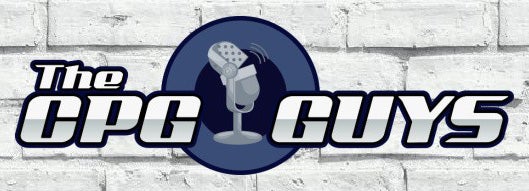The CPG Guys, a brand and retail industry podcast, started as a way for ecommerce expert Sri Rajagopalan and data analytics specialist Peter V.S. Bond to stay on top of industry news during the pandemic.
Initially, Rajagopalan and Bond, who began their careers together at the CPG data and analytics company IRI more than 20 years ago, tried a YouTube video series.
That was no good.
They “quickly discovered video may not be their medium,” said Bryan Gildenberg, who came on as the podcast’s first guest when he was heading up strategy for Omnicom’s shopper and commerce marketing groups. He became the third CPG guy soon after hanging up his shingle as the founder of commerce consultancy Confluencer Commerce about a year ago.
Audio was more portable and a new medium where regular people could build an audience. Also, it’s simply more affordable to produce. The CPG Guys show still records video for every episode and gives the files to guests, who often use the videos as promotional material, Gildenberg said.
The show takes a retail media and commerce media analytics slant, Gildenberg said, bringing on guests from the likes of Amazon, Walmart Connect, Albertsons Media Collective and Kroger Precision Marketing.
Retail media’s rise served as an “accelerant” for the podcast, which has grown organically to about 24,000 LinkedIn followers, with thousands of downloads every episode. Its most popular episodes tend to be those featuring senior marketers on the brand and retail side.
Gildenberg spoke with AdExchanger.
AdExchanger: How do you choose topics or guests?
BRYAN GILDENBERG: About 50% of the episodes are direct industry participants, and 50% are service providers. The service providers are largely advertising based. Like any content-based ad platform, you always make a decision: These people showed up with a giant check, but is that interesting to our audience?
We always try to find advertisers that are doing legitimately interesting work. The sponsored episodes are our primary monetization tool right now.
Where should I invest?
I’d say that’s not necessarily our bailiwick. We love all of our children equally.
It’ll be very interesting to see what happens with the Instacart IPO. We all talk about Instacart as a delivery platform, but it makes most of its money as an advertiser – as does Apple, by the way. And last quarter if you look at Amazon’s financial statements, they made more dollars of profit from advertising than anything else.
What misconceptions do people have about CPGs and retail media?
People misunderstand Amazon’s business model. Most of what Amazon does, and what they’ve done for years, is what another retailer would call merchandising, which is allowing brands to advertise a product for sale pretty close to where the person’s going to live.
There’s a giant misconception around how much of a CPG business is ecommerce because it’s way smaller than people think. The brick-and-mortar retail ecosystem is still where an overwhelming percentage of consumer products are sold in the US. From an ecommerce point of view, half the volume is picked off the shelf of a store and fulfilled either by the retailer’s home delivery network, delivery from the store or the shopper picking it up at the store.
Why hasn’t buying groceries online caught on in the same way that buying clothes has?
The data would reveal that you’re buying too many little things at one time, and the variability of what you buy is enough that the process of doing it online is not that easy. Retailers all built their ecommerce infrastructures to copy Amazon’s, and Amazon is a one-item-at-a-time selling ecosystem.
Instacart has a purpose-built grocery purchasing interface, and it’s one of the reasons I’ve always remained pretty bullish on Instacart. It’s a better user experience for buying groceries than the retailer’s own website.
How is product discovery changing?
The outputs that a text-based generative AI like ChatGPT can give you are incredibly important in the product discovery process, and at some point [generative AI] is going to replace or supplement search.
Right now, if you look at where shoppers are discovering new products, increasingly that’s coming through visual mediums that are more phone and scrolling based. [Google] works in a vertical way: category, subcategory, sub-subcategory. That’s the way most retailers work.
Instagram and TikTok don’t work that way at all because they’re affinity based. Though the scrolling process is vertical, their content organization is more horizontal. You get moved through what you’re interested in, some of which is related to what you’re looking at, some of which isn’t.
One of the reasons Amazon’s Prime Day was as big as it was this year was the linkage they made to TikTok. Amazon has turned into a conversion mechanism for demand.
This interview has been edited and condensed.














